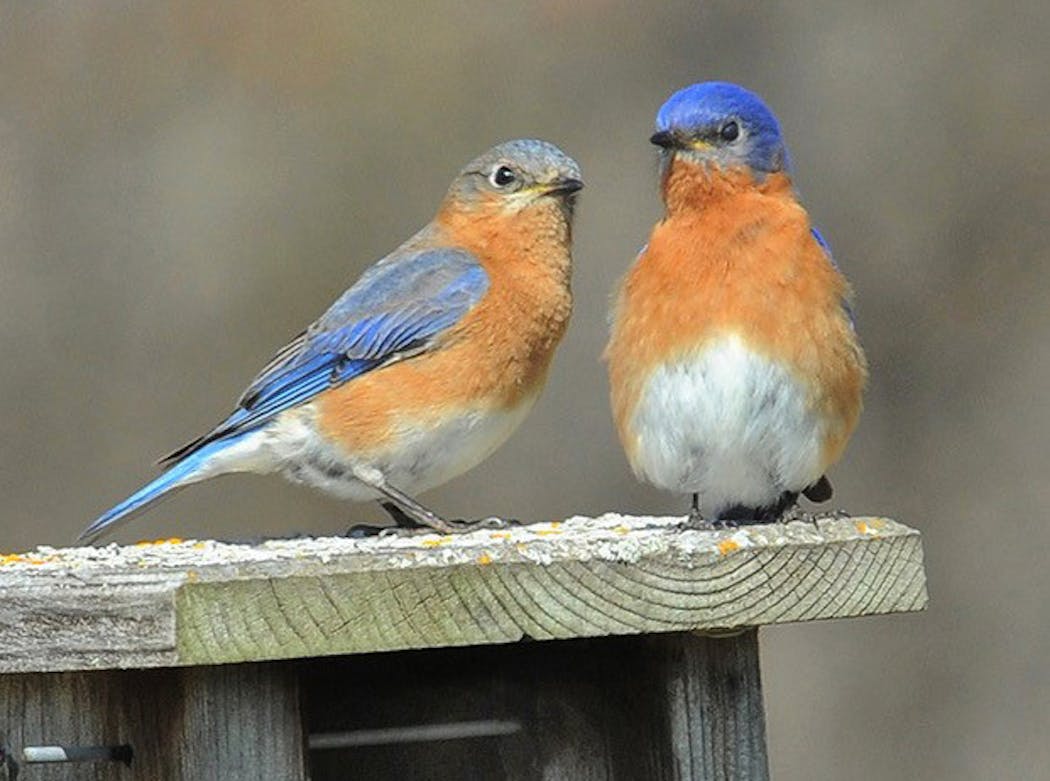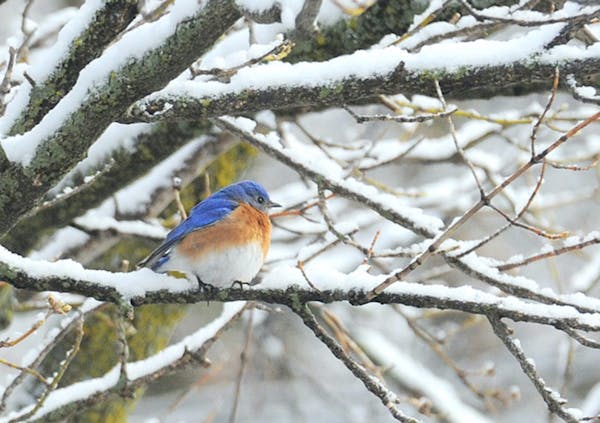You might imagine that a scientific community that can splice genes, clone life and put machines on the Martian surface would know all about the life of our everyday bird species. You would be wrong.
Many facets of the lives of perhaps every bird species in the world could use additional study, including bluebirds. We learn this from the life history monograph series published as "The Birds of North America (BNA)."
Each monograph, an illustrated 8.5- by 11-inch booklet, discusses all aspects of the birds' lives — appearance, distribution, migration, habitat, food habits, sounds, behavior, breeding, population status, conservation and management, and priorities for future research.
The latter section tells us what at the time of publication wasn't known.
Knowledge gaps exist for Eastern bluebirds, for example. This isn't a critical point, but interesting given that the species is common, with adults and chicks easily accessible for a wide variety of research projects.
Eastern bluebirds are obligate cavity nesters, with a cavity of some kind necessary to nesting success. Enter the bird house. Nest-box networks — bluebird trails — cover eastern North America.
Bluebirds are good research candidates because they can be handled if necessary. The females are so loyal to their nests and eggs that they sometimes can be picked off the nest and held for examination.
People tending the boxes sometimes remove the chicks to check for parasites, often blowfly larvae. Pick them up, remove the larvae if found, put the bird back in the nest. I've not known of any residual impact.
What don't we know about Eastern bluebirds? Among other things:
• Research authors Patricia A. Gowaty and J.H. Plissner write that links between the birds' songs and calls and their behavior are obscure. What does a particular song mean, what is its function?
• Little is known about migratory behavior and bluebirds' physiology (the normal functions of living organisms and their parts).
• Little study has been done on development of fledglings.
• There can be variation in the ratio of males to females among hatchlings, the authors say. It's unknown whether this variation offers a survival advantage to the species.
Is there benefit to either too many of one sex or too few? This would be a good subject for further research, the authors write.
Eastern bluebird populations vary in terms of whether they are above (more birds) or below (fewer birds) replacement levels.
This variation makes them models for a range-wide study of source-sink population dynamics. Source means areas that produce populations exceeding the numbers required to replace the parent birds. Sinks are areas with populations that fail to meet replacement numbers.
Most of this research, regardless of species, is done by students seeking advanced academic degrees. Written results often are submitted for publication in various scientific journals. The BNA series has drawn heavily from such journals.
Lifelong birder Jim Williams can be reached at woodduck38@gmail.com.
Read more birding news at startribune.com/homegarden.
5 ways to learn more about bluebirds
Get fact sheets, plans and more at the North American Bluebird Society. nabluebirdsociety.org
Ten steps to start a bluebird trail. sialis.org/startingatrail/
Learn about the bluebird's range, listen to its song and get ID info at CornellLab All About Birds. allaboutbirds.org/guide/Eastern_Bluebird/overview
Audubon has step-by-step instructions for building a bluebird nest box. audubon.org/news/how-build-bluebird-nest-box
Read a firsthand account of monitoring a nest-box trail in Minnesota. conservationcorps.org/updates-stories/monitoring-a-bluebird-nestbox-trail/



